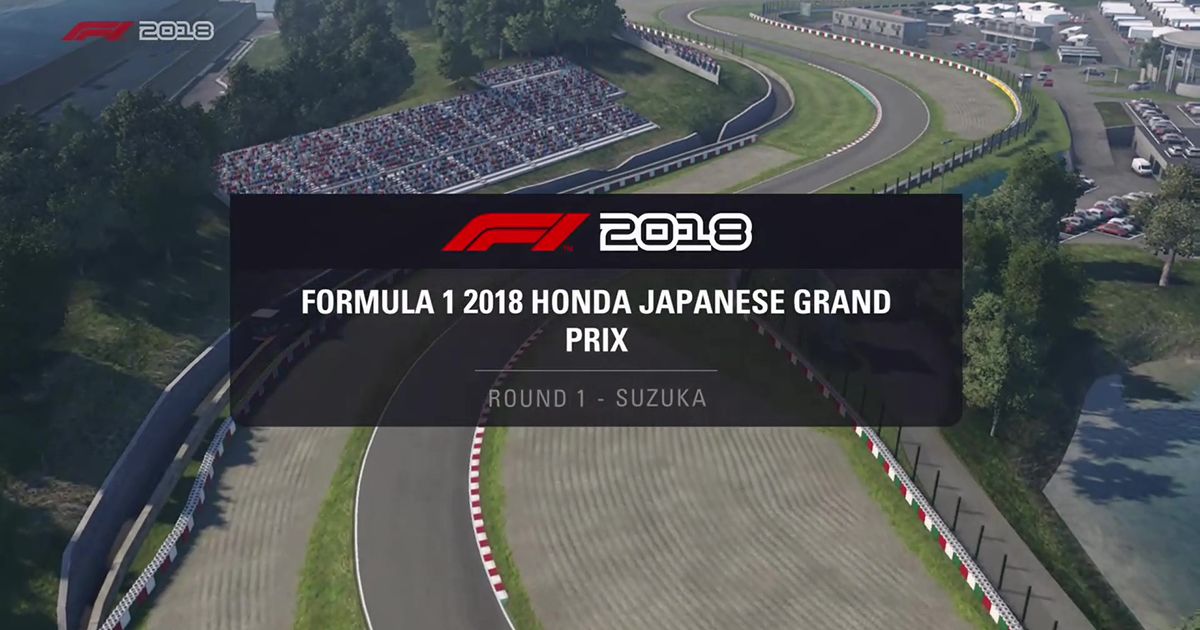The Japanese Grand Prix was first held in 1976, which was famous for where James Hunt sealed his World Championship when Niki Lauda decided to retire due to weather. The '76 and '77 races were held at Fuji before the race disappeared. It returned in 1987 at Suzuka and thanks to its position late in the calendar it has been the site of several championship-deciding moments, including two duels between Ayrton Senna and Alain Prost. As with most tracks, the most successful driver at Suzuka is Michael Schumacher who has won there 6 times, but Lewis Hamilton is closing in on that record after winning his fifth Japanese Grand Prix in 2018.
Suzuka is a winding, twisting, figure 8 track that offers little respite for a driver of the course of a lap. Some of the more demanding corners, like the famous 130R (turn 15), have been tamed by modern aerodynamic performance but the majority of this track is a challenge of mid-speed corners, curving braking zones, and awkward overtaking points.
Turn 1/2
The only DRS zone of the lap is down the short pit straight into turn 1, which is a flatout right kink that leads immediately into turn 2. This makes a pass particularly tricky, but with the DRS and slipstream it is the best opportunity to pull alongside a car. Pulling to the inside and muscling your way though is the safest bet, but it is also possible to sweep around the outside if they go ultra-defensive. You have to get this move spot on otherwise there is no way you can make turn 2, but if you have good tyre life and a stable setup then you can make it stick.
Turn 11
The hairpin of turn 11 is a particularly vulnerable corner for the AI. They will hug the right hand side through turn 10 to line up their braking point for 11 and enter particularly slow to get a nice drive out. This leaves them vulnerable to a lunge up the inside. You may have to defend your newly won position on the run through turn 12, but it is possible to get past here. I don't recommend trying this on another user too frequently as you are likely to get turned in on and lose some front wing, but the AI will concede the position if you time it right.
Turn 16
The best place to make a pass around Suzuka is turn 16. This right-left chicane comes after the long blast down from the Spoon Curve and 130R, and while there isn't DRS the run is long enough to get a serious slipstream and allow you to pull out for a move up the inside. The kerbs here are quite harsh but you have some run-off if you outbrake yourself. Coming off-line to get the pass done does compromise you somewhat on exit and can leave you vulnerable into turn 1 if you aren't careful.
Suzuka has more overtaking opportunities than you may think then, but it also has more tricky corners than most tracks.
Turn 3-7
The Suzuka esses are famously testing. Following a car through here can completely change your line and utterly ruin a lap, while with worn tyres you are always at risk of sliding off line and losing time. With a control pad the esses are nearly impossible to get right and even with a wheel the mid-speed, precise nature of the corners result in a mistake somewhere during this sequence.
Turn 8/9
The Degner curve (turn 8) is one of the most enjoyable corners in F1 2018, but that doesn't make it easy. You can carry a lot of speed through this right-hand kink, but there is gravel waiting for you if you get too excited through here. Turn 8 leads quickly into a much tighter right-hander for turn 9, and stringing these two corners together is vital to your lap. If you get it wrong and go wide at 8 you risk a spin, get 9 wrong and you are a sitting duck into the turn 11 hairpin.
Turn 13/14
Otherwise known as Spoon Curve, turn 13 & 14 is a tricky double apex left that has two braking points. It is very hard to get your line right through here, but massively important as it leads onto the back straight and the run down to the final chicane. If you get this corner wrong you are vulnerable to an overtake and will lose a lot of time in qualifying. This corner requires practice.
Setup
The Japanese Grand Prix is far more about suspension settings than your wing angle. You need a responsive and well-balanced car to sweep through the esses and around Spoon, but you also have to look after your tyres here as the constant cornering can really ruin your rubber if you aren't careful. You can see our setup here, but remember that your own driving style, controller setup, and level of assists means you may need to make a few tweaks to maximise your pace.
Explore new topics and discover content that's right for you!





